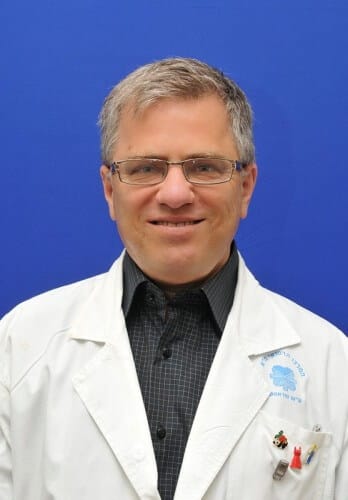As a result of the early diagnosis, those diagnosed received treatment and recovered

The study was carried out at the Integrated Center for Cancer Diagnosis and Prevention in the Tel Aviv Medical Center, which performs tests for the early detection of the 11 most common types of cancer. Thanks to the tests, the subjects received timely treatment, which allowed them to fully recover. The study was published in the prestigious European Journal of Internal Medicine
Even seemingly healthy men and women, who maintain an active lifestyle and do not feel any particular pain, may carry a cancerous tumor in their body that may spread without appropriate treatment. A study conducted at the Integrated Cancer Diagnosis and Prevention Center operating within the Tel Aviv Medical Center found cancerous tumors in 2.4% of the subjects, who thought they were perfectly healthy. The early detection makes it possible to provide those subjects with timely medical treatment and stop the spread of the disease. The research findings were published in the latest issue of the European Journal of Internal Medicine.
The retrospective study included 1,000 adult subjects who voluntarily came for screening tests, between January 2006 and January 2010. As part of the day, the subjects underwent tests for the early detection of the 11 most common types of cancer in Israel - oral cancer, thyroid cancer, colon cancer, skin cancer, lung cancer, Breast cancer, uterine and cervical cancer, prostate cancer and testicular cancer.
It is important to emphasize: these are healthy people, with an average age of 48 years, who chose to come to the center as part of a routine examination, out of a high awareness of the saltiness of cancer and the importance of early detection, and were not referred by a family doctor or another doctor.
The study sought to map all the findings found among the 1,000 subjects, and to establish the relationship between known risk factors for cancer and the presence of tumors - benign and cancerous - in the same group.
The first finding dealt with the incidence of cancerous tumors among the apparently healthy population. Among 2.4% of the subjects who reported themselves as healthy, cancerous tumors were found. In most cases, these were malignant tumors in the initial stages of the disease, in a way that allowed treatment and full recovery. The fact that the study is published three years after the conclusion of the collection of the findings, also allows for continuous follow-up of those subjects and to make sure that the treatment they received did indeed help prevent the outbreak of the disease and save their lives.
Among the 24 subjects in whom cancer was discovered, 10 were found to have breast cancer (although most of the subjects were men), 7 were found to have gastrointestinal cancer. Three cases of skin cancer and prostate cancer were also found. Surprisingly, not a single case of lung cancer was found - even though it is a cancer that is responsible for the highest number of deaths in the world, and despite the fact that about half of the subjects (45%) smoked in the past or currently.
Benign or pre-cancerous tumors were found in 7.1% of the subjects, about half of them were found in the digestive system, and the rest in the uterus or cervix, skin, and mouth. Here too, the tumors were completely removed, in a way that ensured a full recovery thanks to the early detection in the pre-malignant stage.
As expected, the subject's age had the greatest effect on the chance of getting cancer: subjects over 50 years of age had a significantly higher risk of getting cancer and developing both benign and malignant tumors, compared to younger ages.
Other factors that were found to be in full agreement with the presence of cancerous tumors were obesity, excessive alcohol consumption (more than 2 servings per day), and smoking for 30 years or more of a pack of cigarettes per day. Surprisingly, a family background of cancer was not found to be significantly related to the presence of cancerous tumors among the examined sample.
The main conclusion that emerges from this study, according to Prof. Nadir Arber, the director of the Cancer Prevention Center, is that "cancerous tumors may be detected even among the healthy population - and at a significant rate, but the good news is that thanks to early detection and appropriate treatment, the disease can be prevented before its onset, thereby saving lives." .
The study was published in the prestigious European Journal of Internal Medicine

8 תגובות
Avi, I'm not a doctor, but I agree with Lena's recommendation
And seriously.. how important it is to do these tests, at least 24 people "saved" themselves agony later (at best)
* 'Ramat' Tsel quantity
Father, what are you doing?
The higher the level of the sample, the more accurate the percentages, so it is important to know the amount of the sample.
My father recommends contacting a doctor for the diagnosis of brain cancer, or the brain itself.
Hahaha 2.4% of 1,000 I wonder what percentage came out of 100,000
by simple account 240%
What test did they do?
Is there no test like a blood test that shows these things or did the subjects have to undergo invasive tests to find the cancer?